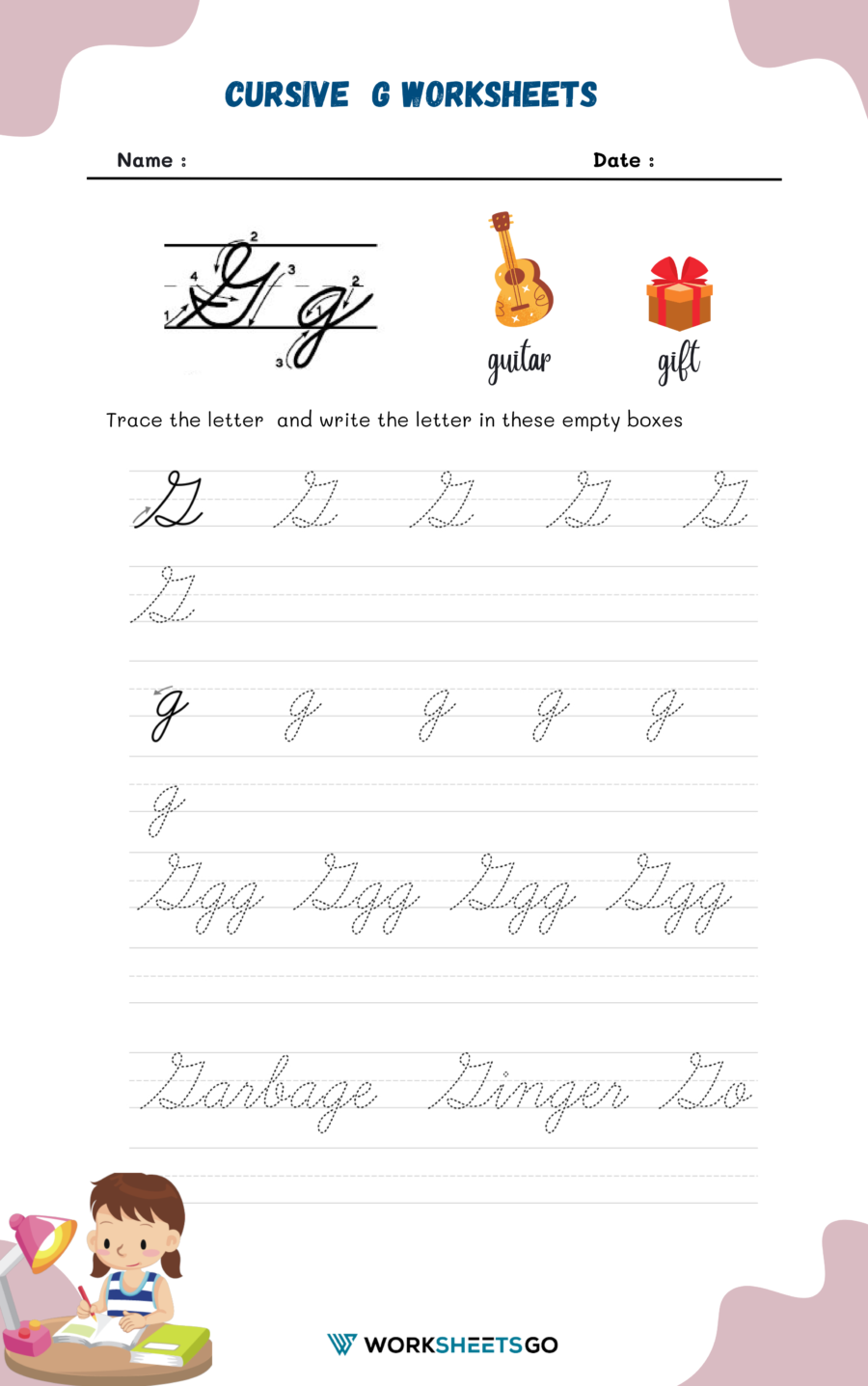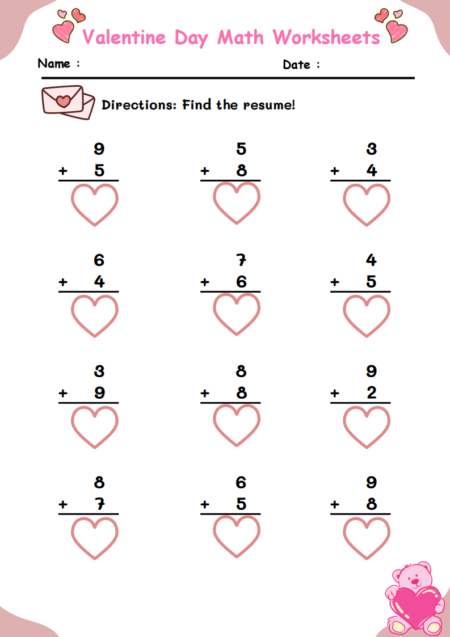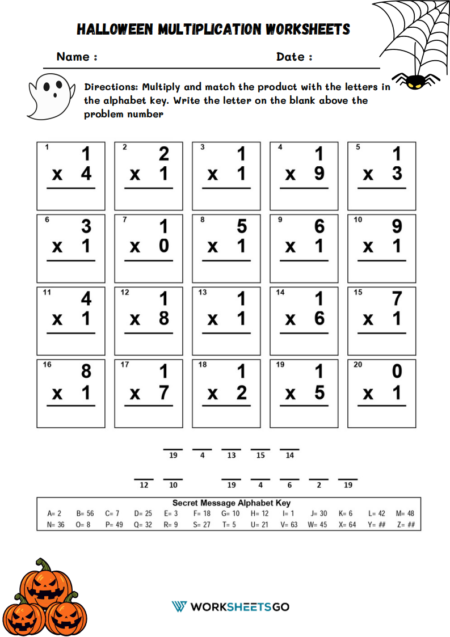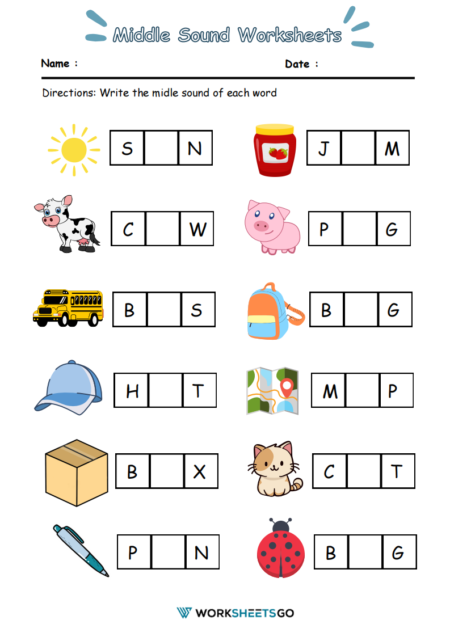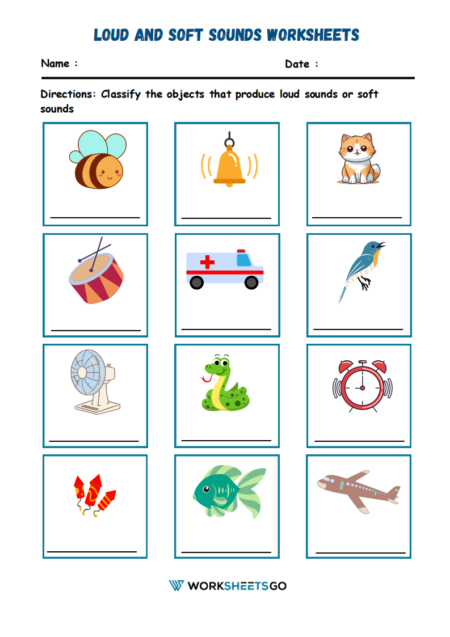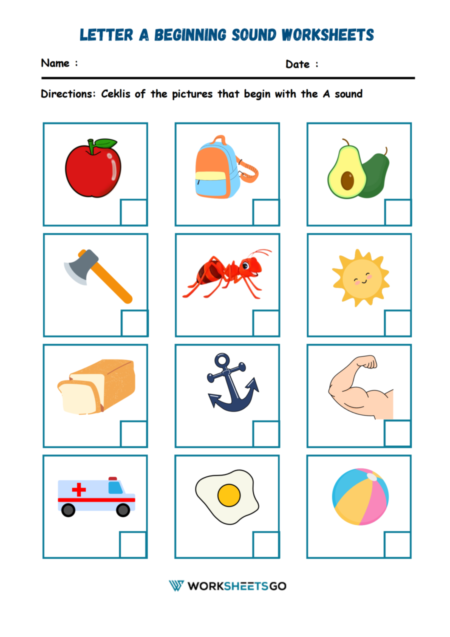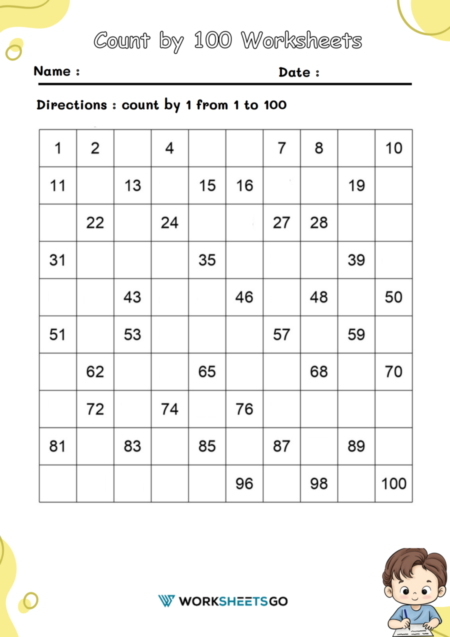A “Cursive G Worksheet” is designed to help students learn how to write the letter “G” in cursive. Writing in cursive is a skill that involves connecting letters in a flowy and stylized manner. Cursive writing can enhance motor skills and is often introduced to children in elementary school. Here’s a generalized explanation suitable for a teacher or parent regarding a Cursive G Worksheet:
General Explanation:
1. Objective of the Worksheet:
- Learning the Cursive G: The main goal is to teach students how to correctly form the cursive letter “G,” both uppercase and lowercase.
- Practicing Writing: It provides a space for practicing the writing of this letter repeatedly, to enhance muscle memory.
2. Structure of the Worksheet:
- Introduction to the Letter: A brief introduction or display of how the cursive “G” (both uppercase and lowercase) should look.
- Step-by-step Instructions: Many worksheets provide step-by-step instructions on how to form the letter, which could involve numbered arrows or dotted lines to show the direction and sequence of strokes.
- Practice Lines: Lines or blank spaces where students can practice writing the letter “G” on their own.
- Example Words: Sometimes there are examples of words that contain the letter “G” for additional practice in connecting it to other letters in cursive writing.
3. How to Use the Worksheet:
- Reviewing the Guide: Begin by reviewing the exemplar “G” and any instructions or stroke orders provided on the sheet.
- Tracing the Letter: Children can start by tracing over any dotted examples of the “G” to understand its form.
- Independent Practice: Using the provided lines or spaces, students will practice writing the “G” without tracing, trying to mimic the form and connections.
- Word Practice: If the worksheet includes sample words, have the child practice writing these to get used to incorporating the “G” into connected cursive writing.
4. Benefits:
- Enhancing Fine Motor Skills: Cursive writing helps in developing fine motor skills due to the specific hand movements involved.
- Speed and Efficiency: As students get adept at cursive writing, it can often allow them to write more quickly and fluidly.
- Cognitive Development: Learning and practicing cursive can also benefit cognitive development by engaging the brain in spatial and coordinative tasks.
5. Tips for Parents/Teachers:
- Patience and Encouragement: Learning to write in cursive can be challenging for some children, so patience and positive reinforcement are key.
- Consistent Practice: Ensure regular practice to help the child build muscle memory for writing in cursive.
- Corrections: Provide constructive feedback and gentle corrections to refine their technique.
- Use of Appropriate Writing Tools: Ensure that the child uses a comfortable pen or pencil that provides good grip and control.
This detailed explanation should be a helpful guide for teachers and parents in understanding the structure and purpose of a Cursive G Worksheet. It can be a useful tool in both home and school settings to facilitate the learning of cursive writing among children.
